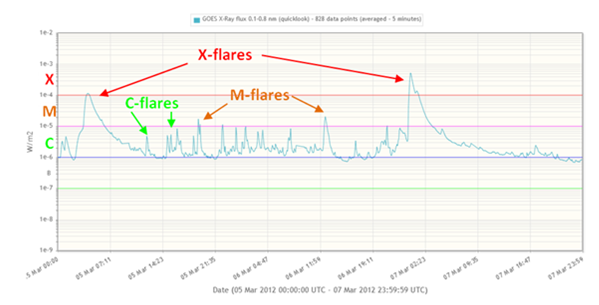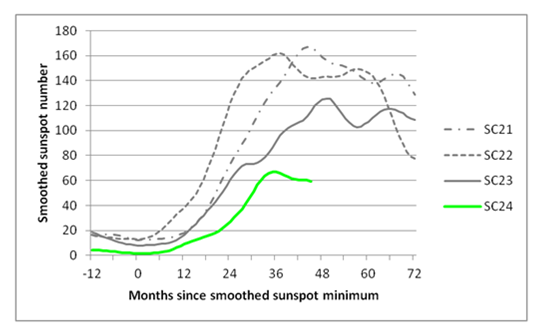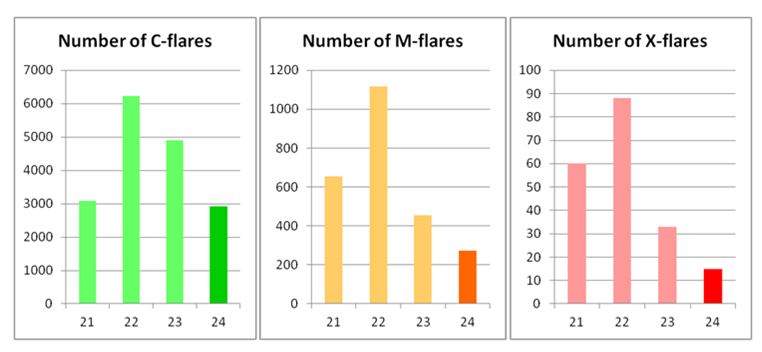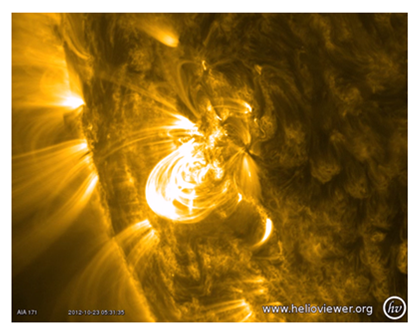A solar flare is a sudden release of an enormous amount of energy due to magnetic reconnection in the solar atmosphere, usually above sunspot regions. This energy release takes place over the entire electromagnetic spectrum. Solar flares are often classified according to their peak strength in x-rays. Scientists usually use three categories: "C" (common), "M" (medium) and "X" (extreme), with each category 10 times stronger than the previous one. As an example: an X6-flare is 10 times stronger than an M6-flare, and 600 times stronger than a C1-flare.

51 months have elapsed now since the previous solar cycle minimum in December 2008. Though sunspot activity has risen, it has also been relatively low, notwithstanding a brief intensification during the second half of 2011. Thus, it's no surprise that also the number of solar flares has been relatively low.

In order to get a feeling how low, a comparison is made with the previous 3 solar cycles for the same period (51 months), based on data from NOAA/NGDC.
As can be seen in the image below, the number of flares for each category is the lowest for the ongoing solar cycle 24 (SC24). Only in the C-class, numbers are comparable to SC21. For the stronger M- and X-category, the numbers are depressingly low, with SC24 having produced so far only half of what SC23 produced. And these numbers pale when compared to the very active SC21 and SC22, attaining only about a quarter. An overview of the 15 X-class solar flares from SC24 can be found in a previous STCE Newsletter.

Isn't there any good news? Maybe. Both SC21 and SC23 started slow, but were quite active during the second half producing many M- and X-class solar flares. At the end of the cycle, SC21 even managed to produce more flares in all three categories than SC22, while SC23 is still well known for the Halloween events and for particular active episodes in January and September 2005. So, there's still hope for SC24, and we may see more X-class solar flares such as this X1.8-event from 23 October 2012 (image underneath; post-flare coronal loops)!

 |
 |





